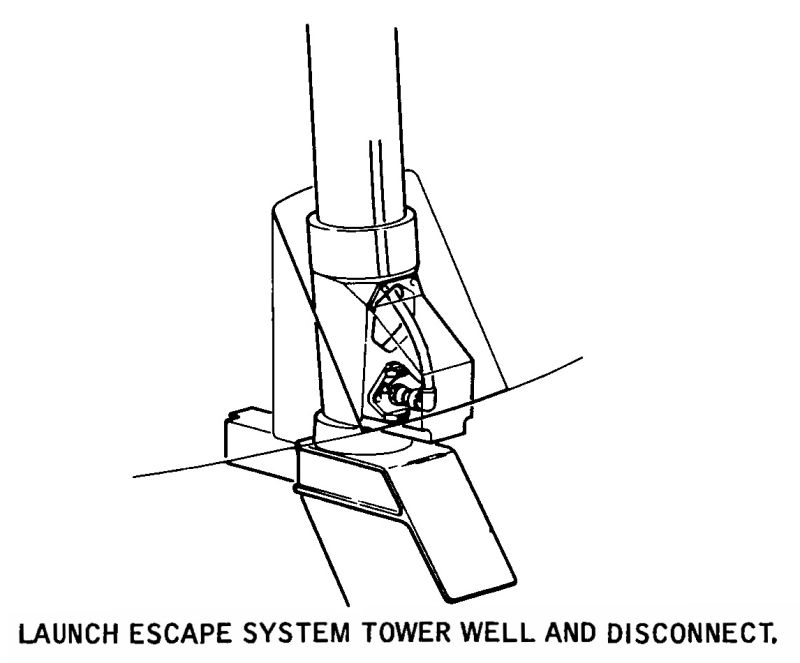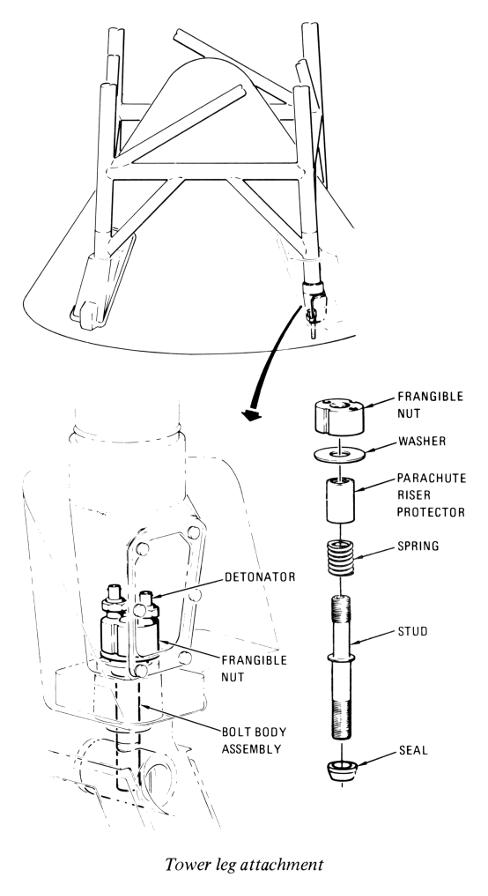Apollo Launch Escape System (LES)
As described in the Apollo Experience Report: Launch Escape Propulsion Subsystem:
The Apollo launch escape system (LES) was designed to provide a positive means of crew escape if booster failure occurred during the initial phase of launch. The system had to achieve sufficient altitude for deployment of the command module (CM) parachutes and to ensure safe lateral separation. Lateral separation was achieved by firing simultaneously the pitch-control motor and the launch-escape motor for low altitude aborts. The pitch-control motor was not required for high-altitude aborts. The system is no longer required after second-stage ignition and is jettisoned after verification of ignition.
The Apollo launch escape propulsion subsystem contained three solid-propellant rocket motors: the launch-escape motor, the tower-jettison motor, and the pitch-control motor. The launch-escape motor, the main motor in the launch escape system, had a thrust of 155,000 pounds and was capable of moving the command module away from and out of the path of the remaining portions of the launch vehicle if a launch-vehicle malfunction occurred and an abort was required. The tower-jettison-motor function was to separate the launch escape system from the command module before deployment of the command module parachutes if an abort occurred. The tower-jettison motor also was used to remove the launch escape system away from and out of the path of a normally functioning launch vehicle. The pitch-control motor was essential to establish a safe trajectory of the activated launch escape system. The design, qualification, and testing of the launch escape system components were completed during the years 1961 to 1966 and were remarkably free of failures.
The qualification test program included two pad abort tests and four Little Joe II flights.
Here's an exploded-view diagram of the launch escape tower, including the Q-ball, pitch control motor, canards, and tower jettison motor.
Click image for a 817x1282 pixel version of this image in a new window.
From p. VI-5 (p. 3 in the PDF) of the Saturn
IB Vehicle Handbook - Vol I - Vehicle Description (file 7) [direct
link to 5.8MB PDF file], part of UAH's USSRC
Archive.
Extraction and clean-up by heroicrelics.org.
Here's a detail of the LES tower's method of connection to the Command Module; this would be one of the two legs without the electrical connector.
Click image for a 1146x950 pixel version of this image in a new window.
Adapted from p. 5.4-58 (p. 204 in the PDF) of the Apollo 4 Mission
Report.
Extraction and adaptation by heroicrelics.org.
The four legs of the tower fit in wells in the CM forward structure. They were fastened with studs and frangible nuts, the latter of which contained a small explosive charge which broke them to separate the CM from the tower when the launch escape system was jettisoned.
Click image for a 2216x4066 pixel version of this image in a new window.
From p. 174 of the Apollo Spacecraft News Reference [Command/Service
Module], located in the Mrazek collection, Dept. of Archives/Special
Collections, M. Louis Salmon Library, University of Alabama in
Huntsville. A similar-vintage News Reference is available in
electronic format from the Apollo Lunar
Surface Journal; refer to page 188 of that PDF.
Scan and cleanup by heroicrelics.org.



